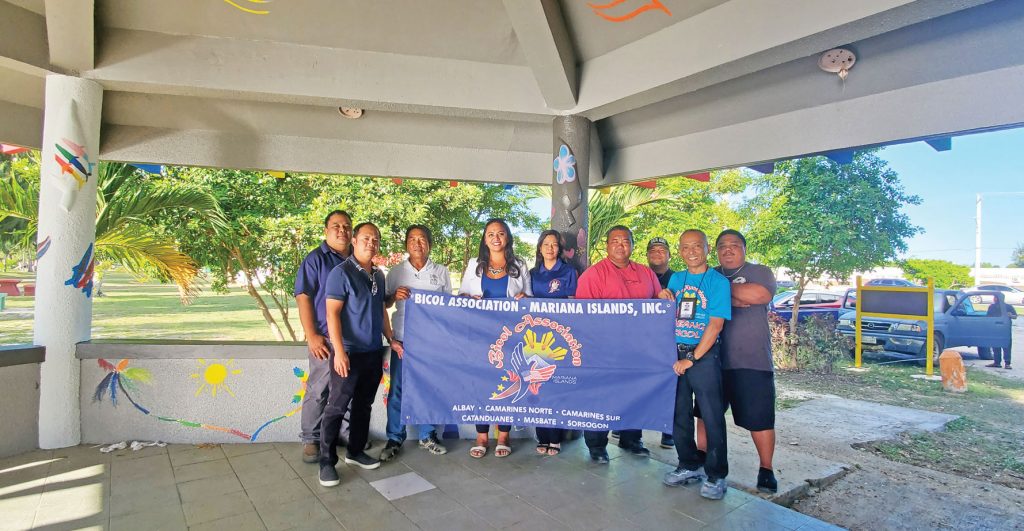Bicol Pavilion issue is resolved; collaboration in the works

Rep. Sheila Therese J. Babauta (D-Saipan) poses for a photo with members of the Bicol Association in the Mariana Islands, Inc. at the Bicol Pavilion on Tuesday afternoon. BAMI, Inc. originally built the pavilion next to the da’ok tree and public playground along Beach Road in 2002. (JOSHUA SANTOS)
An “honest misunderstanding” has been ironed out between the Bicol Association in the Mariana Islands Inc. and Rep. Sheila Therese J. Babauta (D-Saipan) on the behalf of Pride Marianas Youth regarding the hexagonal pavilion next to the public playground and da’ok tree along Beach Road that PMY repainted last week.
It was clarified during a meeting between officials of BAMI Inc. and Babauta last Tuesday that the pavilion is called the Bicol Pavilion, which BAMI built in 2002 and turned over to then-governor Juan N. Babauta in 2004.
BAMI and Pride Marianas Youth now hope to collaborate on future improvements to the pavilion, and to re-include some of BAMI’s original designs. It was previously reported that Pride Marianas Youth beautified the “Da’Ok Pavilion” last Saturday.
Babauta shared with the organization that the adoption of the pavilion last Saturday was made possible through the Governor’s Council of Economic Advisers’ Public Private Partnership initiative, which allows public servants and private businesses to adopt public spaces and beautify them. GCEA identified the hexagonal pavilion as a public space and greenlit PMY’s beautification project last Saturday.
The pavilion is in fact a public space, but BAMI initially took issue with the painting over and removal of designs that were originally part of the pavilion when BAMI completed the pavilion in 2002.
According to Carlito Marquez, who was vice president of BAMI at the time and helped build the Bicol Pavilion in the early 2000s, the pavilion was hexagonal to represent the six provinces of the Bicol region in the Philippines and bore the provinces’ names on signs that hung along the beams of the pavilion. He also said the roof was cone-shaped and painted to represent a well-known volcano in Bicol—Mt. Mayon—and that the pavilion’s pillars were decorated with hot peppers to represent the Bicol people’s love for eating chilis. The signs with province names have since been lost to time and the remaining details were painted over last Saturday.
Babauta and BAMI gathered to work out all misunderstandings at the pavilion on Tuesday afternoon, and both parties left the meeting satisfied. Babauta shared that there is currently a paint shortage on Saipan, and hopes to work with BAMI to repaint some of the pavilion’s original details once she and her group can get paint.
“I wanted to come and let you guys know that our intentions were good and we just [wanted] to beautify. …If [BAMI] has any improvements [they] want to include we can provide the resources,” said Babauta.
BAMI president Noel Ordas was very pleased with how the organization’s meeting with Babauta went.
“We’re glad she was approachable and that she understood our side. The beautification and the painting [by PMY] of the Bicol Pavilion is great. All that the Bicol Association wants is to revive the missing names of the Bicol regions, because they are very significant to our organization,” said Ordas.























